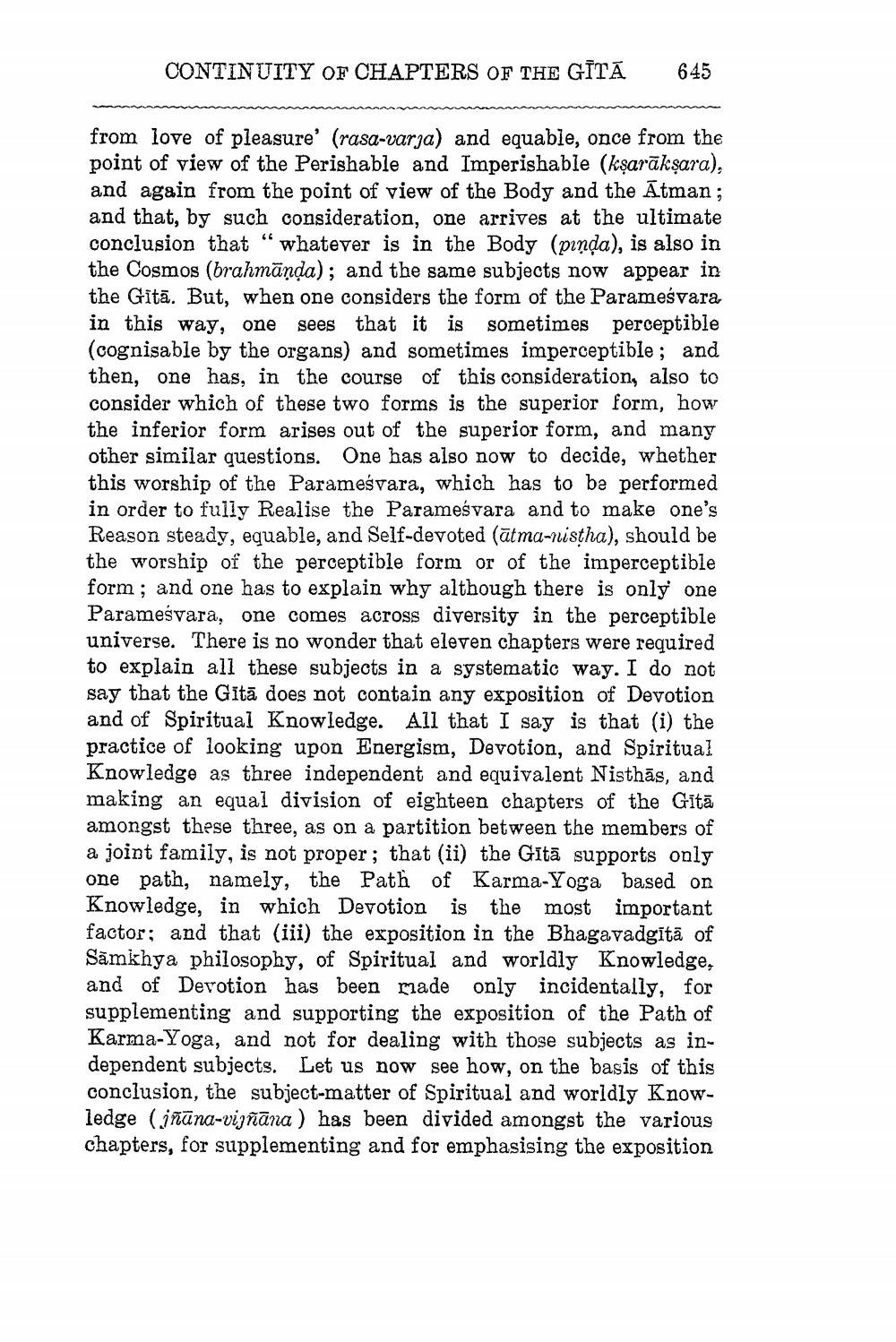________________
CONTINUITY OF CHAPTERS OF THE GĪTĀ
645
from love of pleasure' (rasa-varja) and equable, once from the point of view of the Perishable and Imperishable (kṣarāksara), and again from the point of view of the Body and the Ātman; and that, by such consideration, one arrives at the ultimate conclusion that " whatever is in the Body (pinda), is also in the Cosmos (brahmānda); and the same subjects now appear in the Gītā. But, when one considers the form of the Parameśvara in this way, one sees that it is sometimes perceptible (cognisable by the organs) and sometimes imperceptible; and then, one has, in the course of this consideration, also to consider which of these two forms is the superior form, how the inferior form arises out of the superior form, and many other similar questions. One has also now to decide, whether this worship of the Parameśvara, which has to be performed in order to fully Realise the Parameśvara and to make one's Reason steady, equable, and Self-devoted (ātma-nistha), should be the worship of the perceptible form or of the imperceptible form; and one has to explain why although there is only one Parameśvara, one comes across diversity in the perceptible universe. There is no wonder that eleven chapters were required to explain all these subjects in a systematic way. I do not say that the Gitā does not contain any exposition of Devotion and of Spiritual Knowledge. All that I say is that (i) the practice of looking upon Energism, Devotion, and Spiritual Knowledge as three independent and equivalent Nisthās, and making an equal division of eighteen chapters of the Gītā amongst these three, as on a partition between the members of a joint family, is not proper; that (ii) the Gitā supports only one path, namely, the Path of Karma-Yoga based on Knowledge, in which Devotion is the most important factor; and that (iii) the exposition in the Bhagavadgitā of Sāmkhya philosophy, of Spiritual and worldly Knowledge, and of Devotion has been made only incidentally, for supplementing and supporting the exposition of the Path of Karma-Yoga, and not for dealing with those subjects as independent subjects. Let us now see how, on the basis of this conclusion, the subject-matter of Spiritual and worldly Knowledge (jñūna-vijñāna) has been divided amongst the various chapters, for supplementing and for emphasising the exposition




